Transat Jacques Vabre: Compression and Pressure
Published on November 17th, 2013
(November 17, 2013) – Closing fast on the finish in Itajaí Brasil, where the parties commenced Saturday, when the race village opened, a very warm and exhuberant welcome is expected for both MOD70s when they arrive. Expected during Monday afternoon (local time). Edmond de Rothschild still held a small advantage in to the final 500 miles but with a sequence of weather hurdles set in their way, victory in this eleventh edition of the Transat Jacques Vabre is set to be held in the balance until the very final hours.
Compression, as the fleets compact in lighter winds, has been noticeable in the IMOCA Open 60 fleet who are fighting to get from the stifling Doldrums which are active and complex, into the oxygen of the south easterly trade winds, to establish a more decisive margin. MACIF had seized the lead again this afternoon, coming back from the lighter winds in the east, to squeeze back in front of PRB. But the concertina has squeezed hard and now there is only 30 miles separating first from fifth among the Famous Five, the posse of crews which train together out of Port La Foret. And there has been something of a squeeze in Class 40. The leading duo GDF SUEZ and MARE have not really felt it, still nearly 70 miles ahead of the chasing third placed SNCF Geodis. The Multi 50s are hard on the wind in the SE’ly trades with FenetreA-Cardinal back in a more commanding position over second placed Actual.
The MOD70 match race is very close to its conclusion, but with less than 45 miles between leaders Sebastien Josse and Charles Caudrelier and long time pursuers Sidney Gavignet and Damian Foxall on Oman-Air Musdandam, the two head to head duos will leave nothing on the race course. Working constantly on the deck, snatching brief naps in the shelter of the small cuddy, Gavignet reported today that physically they are starting to bare the effects of their unrelenting work rate:
“We are getting close to the finish and are in good shape on board. For the first part of the race we were operating very much as a duo, but now we’re able to operate single-handedly more and more which helps a lot with getting enough rest in order to be sharp and fresh to keep the speed up during the next watch.
“We are helming a lot and our hands are suffering for it, not quite bleeding yet, but not far off – we’ve been on this tack almost exclusively since Cape Finisterre. Right now we are doing 21 knots of boat speed.” Gavignet told his team earlier today “There are still some challenges to come before Itajai; we have to get through a small front with very little wind behind it, there will be a little from the north and a little from the south. It will be pretty tricky for both boats.
“In the meantime, I am going to get dry and sleep for 20minutes before heading back up on deck and getting on the attack for three hours!
The low pressure system is squeezed between two high pressure zones, resulting in cloudy, difficult transition zones, which will mean a slow down for the leader before escaping again. Gavignet and Foxall were making sure they were fully energised for the final night.
Oxygen
In the IMOCA Open 60s it is MACIF which has only just managed to pass in front of PRB as the two leaders fought into the first of the SE’ly trade winds. Making 16kts on the afternoon ranking suggests Francois Gabart and Michel Desjoyeaux have an edge which might multiply initially on the 750 miles tack towards Recife on the corner of Brazil.
Class 40 sees the contraction in the peloton become more noticeable as they run into lighter breezes. Now just four miles separates third from sixth, Campagne de France (Miranda Merron and Halvard Mabire) dropping a couple of places over the early afternoon. Merron said this afternoon: “We are into a bit of a snakes and ladders phase right now so we really need full concentration as we get into a bit of a light patch. The boats behind will be catching so we have to minimise that effect.”
“We lost out a bit with the staggered start which did advantage the boats which went out first, and again at Finisterre, but we really have been pushing hard to get back into it.”
Speaking of their strength together as a duo, certainly one of the most enduring partnerships in the Class, Merron pointed out that more than 36,000 miles of sailing together, means they are able to push their boat to constant high average speeds.
Quickest through much of the day has been Mike Gascoyne and Brian Thompson who are driving hard to try and recoup the miles they lost making a big repair to their mainsail. Lying 11th the British duo believe they have a good chance to come back:
Talking on the live radio vacation with Paris, Gascoyne said: “It is great to be getting a chance to catch up the leaders, to make up some lost ground. I think it cost us about 150 to 170 miles we had a big rip across the main, just under the third batten, two thirds of the way down, going down one metre and across to within 30cms of the luff of the sail. So we lowered it on deck, looked at the material we had and unfortunately because we shredded the A5 as well we had some of it, the A5, available. So basically we repaired that all of the next day, hoisted it and 9 the following evening. We were conservative, baby’d it a bit, and it had moved a little but the key area by the leech of the sail was rock solid.”
“We have just built it up and up since yesterday and we are pretty pleased with the ranking this morning and we are going well. The group we were with, Proximedia and that, we have left them behind and are chasing into the group ahead.”
“We know the guys in front have slowed up and it is our turn to enjoy it.”
“For us the guys up the front are going to be held up a little bit with lighter winds, the high is moving down and so we should hold the stronger winds and we think that looking at the leaders, if it goes the way it is looking we could be under 100 miles behind at the Doldrums. And I think that if that was the case, with a pretty straight route down there, we have the advantage of looking down the track and see what’s going on and we will be coming down quickly.”
See latest postions for the fleets:
http://www.transat-jacques-vabre.com/fr/classement
Follow the race:
Internet
Live tracking updated every 30 minutes.
Race Tracker URL: http://tracking.transat-
Positions will be updated every 3 hours: 0400hrs / 0700hrs / 1000hrs / 1300hrs / 1600hrs / 1900hrs GMT
Social Media
Live updates through the start and through the race itself on the official facebook pages and on the twitter feed (@TransatJV).
And the Transat Jacques Vabre Application is now available on iPhone and Android and includes tracking facility.
VIDEO
Video footage will be available to registered broadcasters for download on the TV server:
www.transatjacquesvabre2013.tv
For any queries please contact:
Hélène Tzara – helene.tzara@tjv2013.org – +33 (0)6 10 18 80 90

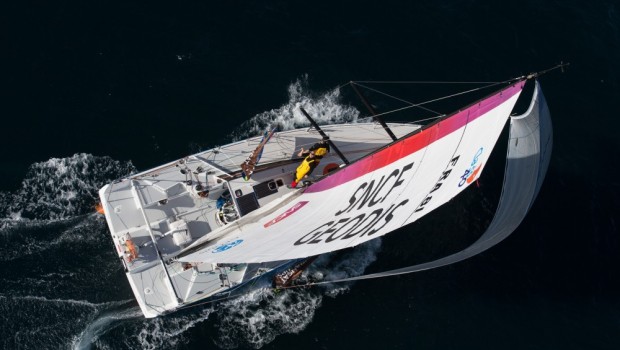


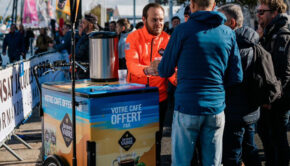
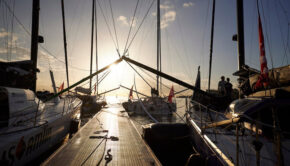
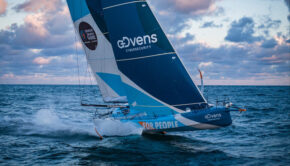
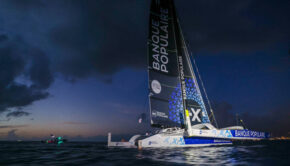
 We’ll keep your information safe.
We’ll keep your information safe.